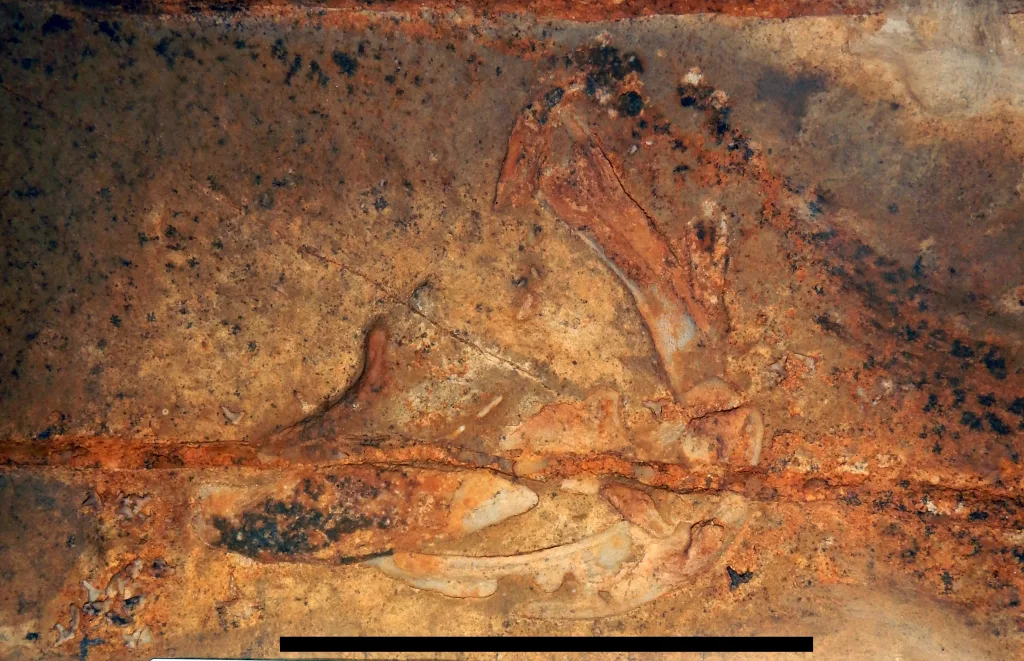
The jaws, teeth, and gills of Glikmanius careforum embedded in the cave ceiling was discovered by Cave Research Foundation explorers during a mapping project at Mammoth Cave National Park. NPS Photo.
Two previously unknown species of ctenacanth shark fossils have been unearthed as part of the continuous Paleontological Resources Inventory (PRI) conducted at Mammoth Cave National Park, according to an official press release. The fossils, belonging to the sharks named Troglocladodus trimblei and Glikmanius careforum, were identified based on fossils gathered from Mammoth Cave in Kentucky and northern Alabama.
“Every new discovery at Mammoth Cave is possible due to collaborations,” said Superintendent Barclay Trimble. “Our park team is honored to work alongside the National Park Service Paleontology Program and now the University of Alabama Geological Sciences Department whose coordinated efforts have made this latest announcement possible.”
Troglocladodus trimblei is a new genus and species of shark that was identified through adult and juvenile teeth found within the St. Louis and Ste. Genevieve Formations of Mammoth Cave and the Bangor Formation in Alabama. The genus name means the “Cave Cladodus” or “Cave Branching Tooth”. It was named in honor of park superintendent Barclay Trimble who found the very first specimen, a single tooth, on an early PRI trip in 2019. The Troglocladodus is estimated to have reached about 10-12 feet in length or about the size of an oceanic white tip shark.
The second shark, Glikmanius careforum, is a new species of Glikmanius that pushes the origins of this ctenacanth back over 50 million years earlier than expected. It was identified primarily from teeth in the St. Louis, Ste. Geneveive, and Haney Formations at Mammoth Cave and the Hartselle and Bangor Formations of Alabama, but a partial set of jaws and gills of a young Glikmanius was also found at Mammoth Cave. This set of cartilage fossil was the first of its kind for this genus of ctenacanth shark. The species was named in honor of the Cave Research Foundation (CRF) who not only support research at Mammoth Cave, but whose members also discovered the Glikmanius jaws. Glikmanius careforum is estimated to have reached 10-12 feet in length or about the size of a Lemon Shark. Its jaw shape suggests it had a short head with a powerful bite for hunting smaller sharks, bony fish, and squid-like orthocones.
Over 325 million years ago, the two identified sharks would have prowled the ancient near-shore environments that spanned Kentucky and Alabama. During that era, the region comprised an ancient seaway, linking what is currently eastern North America, Europe, and northern Africa. However, as Pangaea took shape, this seaway eventually vanished.
The PRI began in November 2019 when ancient shark specialist John-Paul (JP) Hodnett of the Maryland-National Capital Parks and Planning Commission began to work with the NPS Paleontology Program to identify the park’s shark fossils. At least 70 species of ancient fish have been identified at Mammoth Cave from over 25 caves and cave passages that have been surveyed.





